If you’re after the best skis for Rocky Mountain champagne powder, Snowfeet* has some exciting options that stand out from the usual long skis. Their lineup of short skis, skiblades, and skiskates offers a new way to enjoy powder skiing. Here’s the quick scoop:
- 65 cm Skiblades: Super portable and agile, great for tight turns and tree runs, but not ideal for deep snow.
- 99 cm Skiblades (POWDER model): A solid middle ground with wider tips for better floatation in powder. Perfect for most conditions.
- 120 cm Short Skis: Best for deeper powder and more stability, while still being easier to carry than long skis.
- 100 cm Walkski Touring Skis: Designed for backcountry adventures, these work with regular winter boots and are easy to carry.
Why consider Snowfeet? They’re compact, easy to transport, and compatible with various boots (including winter and snowboard boots). While they don’t match the speed and stability of long skis on open slopes, they excel in portability, quick turns, and fun skiing.
If you’re skiing the Rockies, the 99 cm POWDER model is a great all-around pick for floatation and control. For tight tree runs, go with the 65 cm Skiblades, and if you’re hitting deeper powder, the 120 cm Short Skis are your best bet. Backcountry explorers will love the 100 cm Walkski for its lightweight design and boot flexibility.
Key takeaway: Snowfeet’s shorter skis make powder skiing more accessible and fun without the hassle of traditional long skis.
5 Reasons You Suck at Skiing Powder | Let`s Fix It!
1. Snowfeet* Skiblades 65 cm
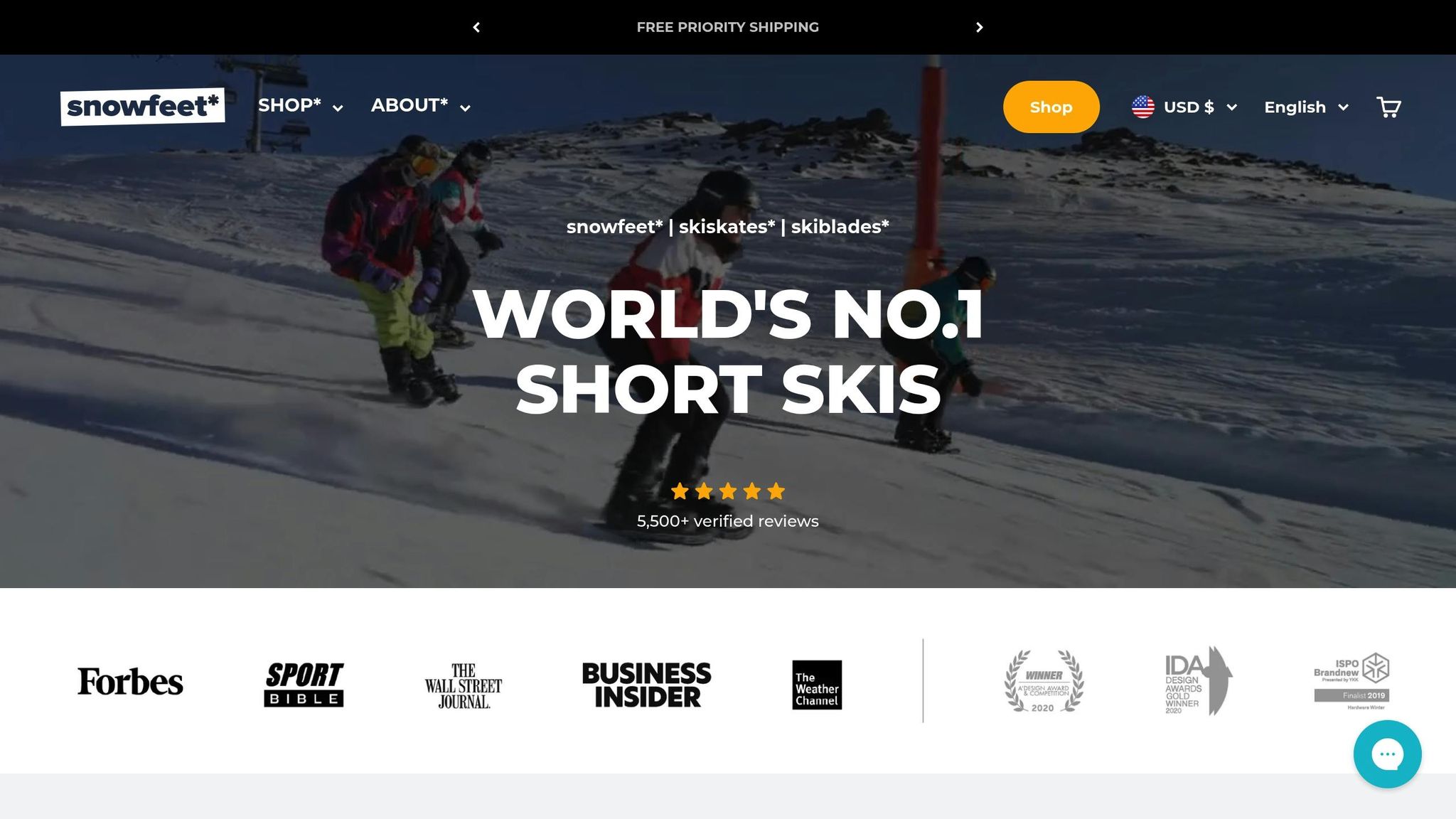
Measuring just 65 cm, these skiblades are Snowfeet's most compact model, offering a fresh take on powder skiing that you won’t find with big names like Rossignol or Salomon. While the ski world often leans toward longer skis for powder, these ultra-short skiblades hold their own in the diverse conditions of the Rocky Mountains. They challenge the idea that longer automatically means better when it comes to deep snow.
Powder Floatation
Traditional powder skis rely on a wide base - typically 110–120 mm underfoot - to stay afloat. These skiblades, however, shine in light, packed powder. In deeper champagne powder, you’ll need to adopt a more centered stance to avoid the dreaded tip dive. This makes them a great choice for mixed conditions, where you might encounter soft powder one minute and firmer, groomed snow the next. Unlike longer skis, which can struggle with these transitions, these skiblades adapt with ease.
Portability
At just 65 cm, these skiblades are compact enough to fit into backpacks, car trunks, or even alongside you on a chairlift. Gone are the days of awkwardly lugging around full-length skis. This portability makes them a dream for backcountry explorers or anyone who prioritizes convenience without sacrificing performance.
Maneuverability
The short length gives these skiblades a big edge when it comes to agility. Whether you're weaving through tree runs, navigating narrow chutes, or tackling moguls, they allow for sharp, quick turns that keep you in control. Unlike traditional long skis, which need more space for wide turns, these let you react instantly to changes in terrain. Plus, their lightweight design means less strain on your legs, so you can ski longer without feeling wiped out. Pair them with your go-to boots, and you're all set for a smooth ride.
Boot Compatibility
One of the standout features here is how flexible they are with footwear. Unlike traditional skis that limit you to specific ski boots, these skiblades work with regular winter boots, snowboard boots, or ski boots - depending on the bindings you choose. For backcountry adventurers, this is a game-changer. Imagine hiking up in comfy winter boots and then strapping into your skiblades for the descent. It’s a level of convenience you won’t find with traditional alpine setups.
At $450, these skiblades bring together portability, agility, and versatility, offering a fresh alternative to traditional powder skis for those ready to try something new.
2. Snowfeet* Skiblades 99 cm (including POWDER model)
If you're looking for a step up from the ultra-compact 65 cm model, the 99 cm Skiblades might be your sweet spot. These skiblades strike a balance between a compact design and solid performance in powder conditions. Unlike the long powder skis from brands like K2 or Atomic, which often go beyond 170 cm, these offer a surf-like ride through the famous Rocky Mountain champagne powder.
The POWDER model deserves a shoutout. It features a wider profile and rockered tips, making it a great choice for those deep, fluffy snow days that Colorado and Utah are known for. While it comes with a price tag of about $490, that's still way less than the $800+ you might shell out for high-end powder skis from big-name brands. This design focuses on floatation and performance, even in the trickiest powder conditions.
Powder Floatation
The POWDER model is all about staying on top of the snow. Thanks to its wider profile and rockered tips, it delivers excellent lift in light, fluffy powder. At 99 cm, it’s a clever middle ground - short enough to stay agile but designed to handle powder like a pro.
Traditional powder skis rely on their length (often 170+ cm) and width (110–120 mm underfoot) for floatation. These skiblades, however, use smart design to make up for their shorter size, giving you the surface area you need for those dreamy powder days.
A ski instructor in Colorado tested these during a 12-inch powder day at Steamboat Springs, a resort famous for its 314 inches of annual champagne powder. The verdict? The 99 cm skiblades floated beautifully in the light snow and made weaving through aspen glades a breeze - something that would be far tougher with traditional longer skis.
In deeper snow, a slight shift in weight toward the back prevents the tips from diving. The rockered design naturally lifts the tips, making these skiblades a solid option for the dry, fluffy powder that the Rockies are known for.
Portability
One of the best things about the 99 cm model is its portability. It keeps the compact advantages of the 65 cm version but adds more versatility. These skiblades fit easily in most vehicles without the need for a roof rack, and you can dodge those annoying oversized baggage fees.
This makes them a practical choice for backcountry trips, hut-to-hut adventures, or just getting to the mountain without the hassle of lugging around traditional skis. Plus, their lighter weight means less strain when you're carrying them - whether you're hiking to untouched powder or just walking from your car to the lodge.
Maneuverability
The short length and rockered profile make the 99 cm skiblades incredibly agile. Tight turns? No problem. These skiblades excel in quick, snappy maneuvers that longer skis often struggle with. Their low swing weight means you can pivot quickly, which is a big win when you're navigating tight glades or uneven terrain.
Reviewers often highlight how playful and nimble these shorter, rockered skis feel in soft snow. That agility is a huge advantage in technical areas or crowded slopes where precision and quick reactions are key.
Boot Compatibility
Like the shorter models, the 99 cm skiblades are designed to work seamlessly with standard alpine ski boots. Adjustable bindings accommodate a range of boot sizes, ensuring a snug fit that maximizes performance.
For skiers who love exploring off the beaten path, this versatility is a game-changer. Whether you're tackling mixed terrain on a backcountry adventure or just enjoying a day at the resort, these skiblades adapt to the journey.
3. Snowfeet* Short Skis 120 cm
For skiers craving a mix of stability and agility, the 120 cm Short Skis from Snowfeet deliver a perfect balance. Priced at $690, these skis are the longest in the Snowfeet lineup but still much shorter than traditional powder skis, which typically measure between 170-190 cm. They’re an excellent choice for those who love the nimbleness of short skis but need a bit more stability for deeper powder or changing terrain. Let’s dive into what makes these skis shine in powder, portability, and maneuverability.
Powder Floatation
The 120 cm length provides a noticeable boost in floatation compared to shorter models. With more surface area, these skis handle deep powder with ease, making them a solid choice for days when the snow is piling up. They’re designed to keep you floating effortlessly, especially in legendary spots like Aspen’s back bowls or the powder-filled runs at Steamboat Springs.
The extra length over the 99 cm model ensures better weight distribution, so you won’t sink in deeper snow. This added stability is a game-changer for varying conditions, like wind-blown powder mixed with soft, untouched sections. Whether you’re skiing through morning fluff or tackling heavier snow in the afternoon, these skis offer consistent performance throughout the day.
Portability
Even at 120 cm, these skis are far easier to transport than traditional long skis. They fit comfortably in most SUVs or larger sedans without the hassle of roof racks. Plus, they’re lightweight enough for backcountry adventures, whether you’re hiking to a secret powder stash or skinning up to a remote bowl.
Compared to lugging around 180 cm powder skis, these shorter skis make a noticeable difference in reducing fatigue. For ski touring enthusiasts, that means easier boot-packing and less strain during long ascents. They’re not as compact as the 65 cm or 99 cm models, but they’re still much more manageable than full-length skis.
Maneuverability
Where these skis truly shine is in their ability to balance stability and agility. The 120 cm length offers solid edge grip on firmer snow while still allowing for quick, precise turns in tight spaces. Whether you’re navigating narrow tree runs or making fast adjustments on steep terrain, these skis respond with ease.
Unlike traditional long skis that favor wide, sweeping turns, the shorter length and reduced swing weight make these skis perfect for quick direction changes. This agility is a huge plus when you’re skiing challenging terrain or dodging unexpected obstacles. And because they require less effort to turn, you’ll feel less fatigue, even after a full day on the slopes.
Boot Compatibility
These skis work seamlessly with standard alpine ski boots, so there’s no need to worry about special gear or adjustments. The familiar interface makes it easy to get in and out of the bindings, whether you’re dealing with deep powder or switching between snow conditions throughout the day. It’s a simple, no-fuss setup that keeps your focus on the fun, not the equipment.
sbb-itb-17ade95
4. Snowfeet* Walkski Backcountry Touring Skis 100 cm
The Snowfeet Walkski Backcountry Touring Skis bring a fresh twist to Rocky Mountain powder skiing. At just 100 cm long, these skis are crafted for backcountry adventures, blending the portability of shorter skis with the features you need for serious touring. Unlike traditional backcountry skis, which can be over 170 cm long and much heavier, the Walkski focuses on ease of use and versatility - all without skimping on performance in that famous champagne powder.
What really sets these skis apart? You can use them with your regular winter boots. That’s right - no need to shell out for pricey, specialized touring boots. This makes powder skiing more accessible while still delivering the performance you’d expect. Let’s dive into how these skis stand out in powder floatation, portability, maneuverability, and boot compatibility.
Powder Floatation
The Walkski’s wide profile and rockered tips are built for powder days. Designed to shine in the light, dry snow of the Rockies, these skis distribute weight evenly, so you won’t sink into deep snow. Even though they’re shorter than typical powder skis, their shape and width give them surprising floatation for their size.
Testers have praised their ability to handle tight powder stashes and quick turns. The rockered tips ride smoothly over soft snow, while the wide waist keeps you afloat even as conditions change throughout the day. Whether you’re gliding through untouched powder or navigating wind-packed snow, these skis stay consistent without the bulkiness of longer models.
Portability
At 100 cm and lightweight, the Walkski is a breeze to carry. They fit into most cars and are easy to strap onto a backpack for those long treks to your favorite powder spots. Unlike traditional skis that can be cumbersome, these compact models make backcountry approaches simpler and less tiring.
For skiers covering long distances on foot, this portability means less strain during the hike and more energy to enjoy the downhill runs. Whether you're weaving through tight tree lines or hiking to remote powder stashes, their manageable size makes a noticeable difference.
Maneuverability
The short length and agile build make these skis incredibly nimble - perfect for the varied terrain of the Rockies. Quick, responsive turns come naturally, whether you’re dodging trees, navigating moguls, or tackling tight glades where powder tends to hide.
Their low swing weight makes direction changes feel effortless, letting you react quickly to changing terrain or unexpected obstacles. While traditional long skis are better for wide, sweeping turns, the Walkski shines in technical terrain, where precision and quick adjustments are key. Reviewers have highlighted their playful, dynamic feel, ideal for skiers who love exploring and having fun over chasing top speeds.
Boot Compatibility
One of the standout features of the Walkski is its binding system, which works with regular winter and hiking boots. Forget about investing in expensive touring boots - these skis let you hit the backcountry with the boots you already own. Whether it’s a casual day in the powder or a more ambitious adventure, you can use the same boots for the entire trip.
This flexibility doesn’t just save money - it also means more comfort. Traditional touring boots can be stiff and heavy, but with the Walkski, you get a more relaxed setup for those long approaches. It’s a game-changer for anyone looking to make backcountry skiing more practical and enjoyable in the Rockies.
Pros and Cons
Here’s a quick breakdown of the strengths and trade-offs of each Snowfeet product. These models are designed to shine in Rocky Mountain powder, but knowing their quirks can help you pick the one that matches your style and terrain preferences.
| Model | Powder Floatation | Portability | Maneuverability | Boot Compatibility |
|---|---|---|---|---|
| Skiblades 65 cm |
Pros: Quick recovery on the surface and great for tight powder spots Cons: Struggles in deeper snow |
Pros: Super lightweight and fits in any backpack Cons: Heaviest option for hiking |
Pros: Quick, sharp turns; perfect for tree skiing Cons: May feel unstable for beginners |
Pros: Works with winter, ski, and snowboard boots Cons: Needs binding adjustments |
| Skiblades 99 cm (including POWDER) |
Pros: Balanced float and control; handles deep powder well Cons: Less surface area compared to traditional powder skis |
Pros: Still easy to carry and transport Cons: Heavier than the 65 cm model |
Pros: Responsive and stable for all-around skiing Cons: Less agile in tight spaces than shorter models |
Pros: Universal boot compatibility Cons: Limited to specific binding systems |
| Short Skis 120 cm |
Pros: Best floatation among Snowfeet models; handles deep powder confidently Cons: Starts to approach the size limitations of longer skis |
Pros: More compact than standard skis Cons: Often needs a roof rack for transport |
Pros: Stable at higher speeds and smooth for carving Cons: Not as playful as shorter models |
Pros: Compatible with all boot types Cons: Heavier binding system |
| Walkski 100 cm |
Pros: Wide profile with rockered tips, designed for backcountry powder Cons: Not ideal for groomed or hard-packed runs |
Pros: Backpack-friendly and great for hiking adventures Cons: Specialized design limits versatility |
Pros: Quick to maneuver in technical terrain Cons: Less stable on open slopes |
Pros: Works well with regular winter boots Cons: Limited to touring bindings |
Snowfeet models bring a fresh twist to powder skiing, standing out from traditional brands like K2, Rossignol, or Volkl. One big advantage? Boot flexibility. Unlike conventional setups that often require pricey, specialized boots, Snowfeet models work with a variety of boots, saving you both hassle and money.
Portability is another win. Even the 120 cm model is compact enough to fit in tight spaces, unlike traditional skis that usually need roof racks or special transport. This makes spontaneous powder trips way easier.
Of course, there’s a trade-off. Snowfeet models sacrifice some speed and stability on open slopes compared to long skis. Traditional setups are built for high-speed runs across wide powder fields, while Snowfeet prioritizes fun, exploration, and accessibility. If you’re all about playful skiing without the need for extra gear, they’re a solid choice.
For Rocky Mountain powder, the 99 cm models (including the POWDER version) are a great middle ground. They provide enough float for most powder days while staying portable and boot-friendly. The 65 cm model is perfect for experienced skiers who love navigating tight tree runs, while the 120 cm option is ideal for those transitioning from traditional skis and looking for maximum floatation.
Conclusion
Snowfeet* offers a range of models designed to meet different powder skiing preferences, making it easier to find the perfect fit for your style, skill level, and terrain.
The 99 cm models, including the POWDER version, strike a great balance for many powder enthusiasts. They provide enough surface area to float in deep snow while keeping the nimble handling that makes Snowfeet* stand out. Beginners will appreciate the forgiving stability of the 99 cm Skiblades, which still offer responsive control. On the other hand, the 65 cm Skiblades are ideal for skiers who love tight turns and quick maneuvers. However, they do demand a bit more skill and balance in tricky snow conditions, making them better suited for confident, experienced riders.
For those chasing deeper powder, the 120 cm Short Skis deliver excellent floatation. Their compact size not only handles deep snow well but also adds a practical perk - these skis can often fit inside a car, eliminating the need for roof racks. That’s a convenience you won’t get with most traditional powder skis.
If backcountry adventures are your thing, the 100 cm Walkski is a standout. Its wide profile and rockered tips make it a reliable choice for powder, and the ability to use regular winter boots for hiking opens up terrain that would usually require specialized touring gear.
Across the board, Snowfeet* models shine with their universal boot compatibility and easy portability. They make spontaneous powder days hassle-free and bring a fresh approach to powder skiing, offering a unique alternative to conventional ski brands.
FAQs
How do Snowfeet's shorter skis perform compared to traditional long skis on open slopes?
Snowfeet's shorter skis bring a fresh twist to open slopes by offering quick turns and sharp responsiveness. Thanks to their compact design, navigating through deep powder or tight spaces becomes a breeze. They add a playful, energetic vibe to your skiing. On the flip side, traditional long skis focus on stability at high speeds and strong edge control, making them a better fit for groomed trails or icy conditions.
For skiers who enjoy soft snow and want something portable and easy to handle, Snowfeet's shorter skis are a standout option. They let you move with more freedom and fun, while still providing enough stability for powdery terrain. Perfect for adventurous skiers ready to shake things up and try something different from the usual skiing routine.
Why is the Snowfeet 99 cm POWDER model perfect for skiing in Rocky Mountain champagne powder?
The Snowfeet 99 cm POWDER model is built to thrive in the famous Rocky Mountain champagne powder - snow that's light, dry, and oh-so-fluffy. At just 99 cm long, these compact skis make it a breeze to slice through deep powder. Their shorter length means quicker, more responsive turns, giving you better control and the ability to glide smoothly across the slopes.
On top of that, their lightweight design makes them super easy to carry, which is a big win for backcountry explorers. Whether you're weaving through untouched powder fields or navigating tight tree runs, the Snowfeet 99 cm POWDER model offers a nimble, fun ride that's perfect for these legendary snow conditions.
Can I use regular winter boots with Snowfeet skiblades, and what impact does this have on performance?
Yes, you can wear regular winter boots with Snowfeet skiblades, but if you want the best performance, snowboard boots are the way to go. They provide better stability, control, and comfort - especially when you're tackling deep powder.
While winter boots might be more convenient, they don’t offer the same level of support. This could impact your performance and even lead to discomfort or a higher chance of injury. To get the most out of your Snowfeet skiblades, go for boots that enhance their agility and ease of use.

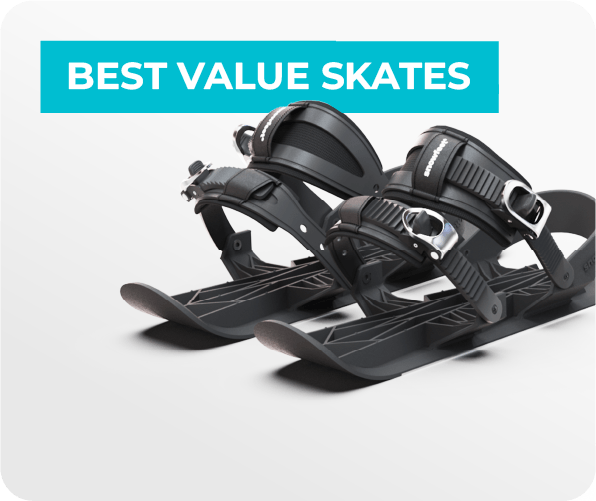



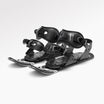
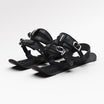
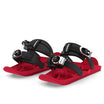
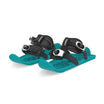

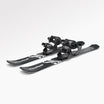

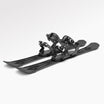
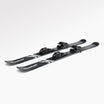






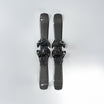
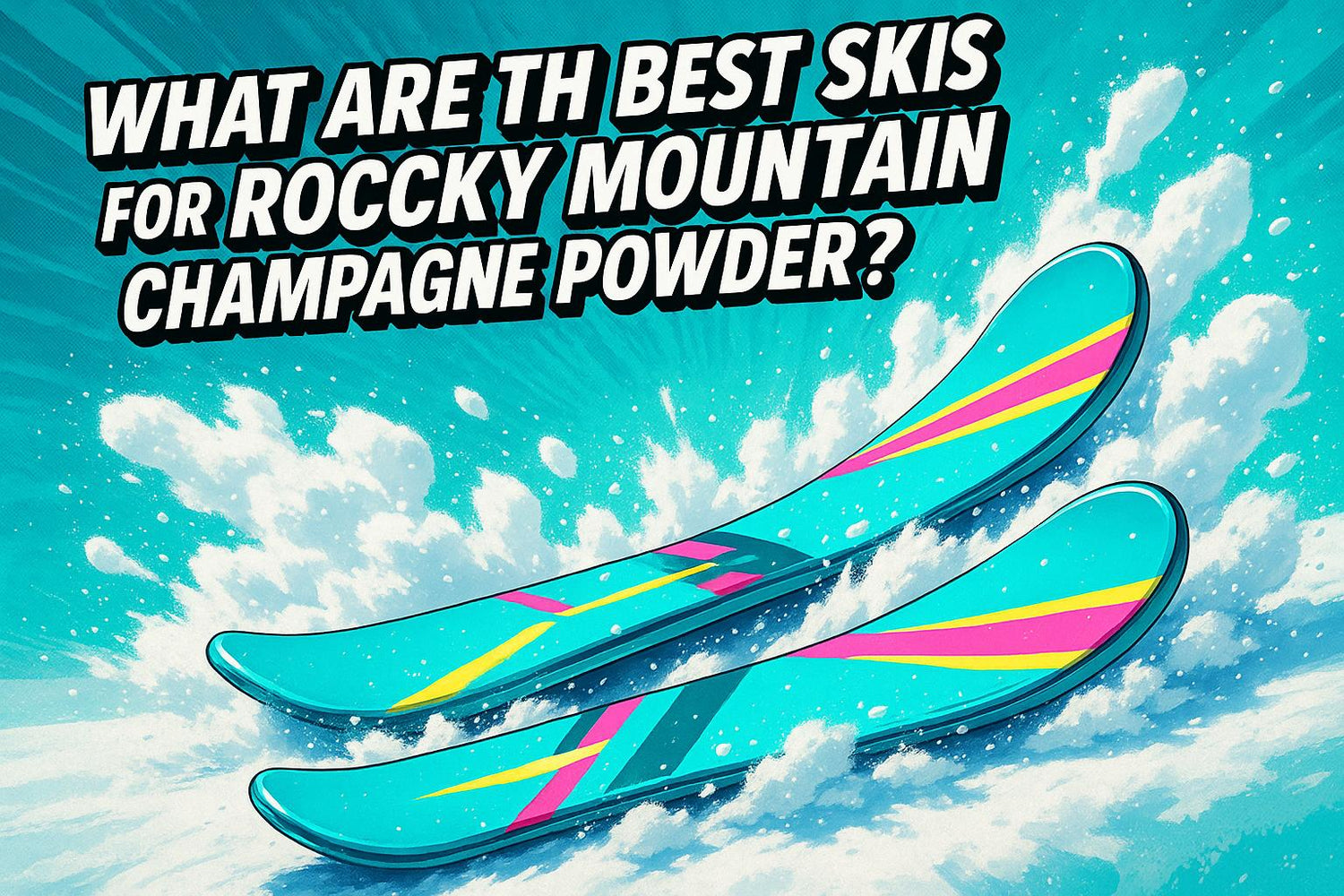
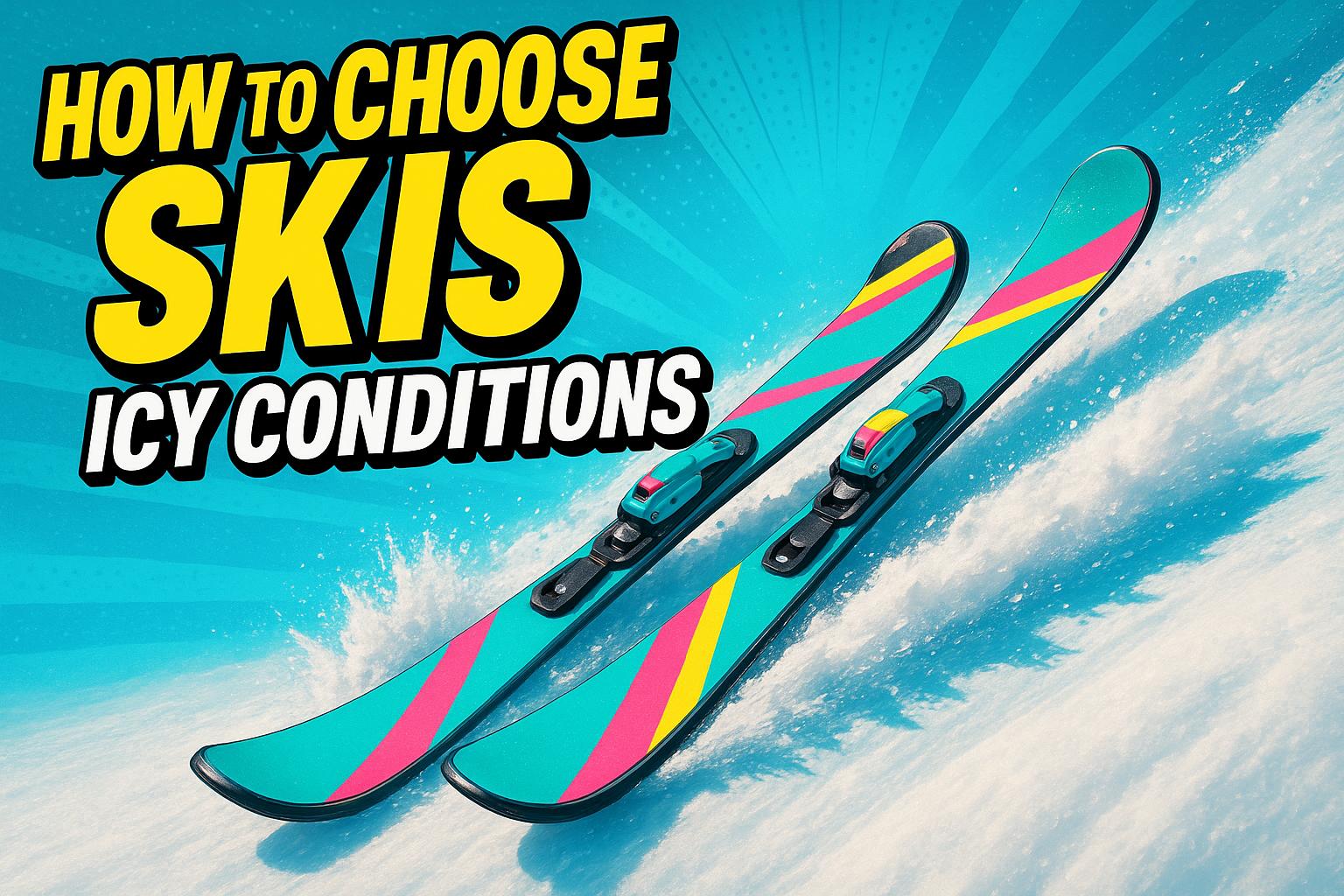
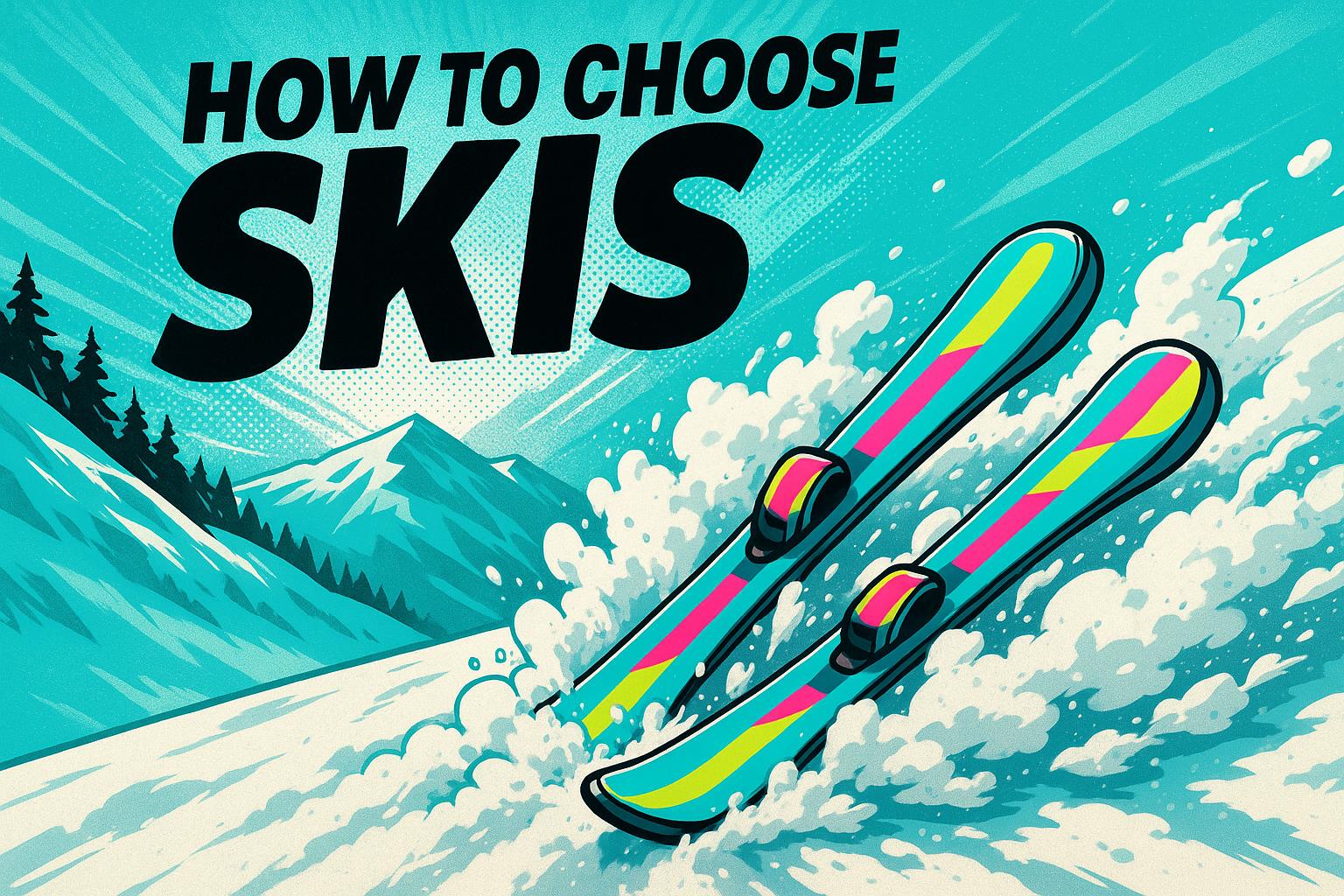
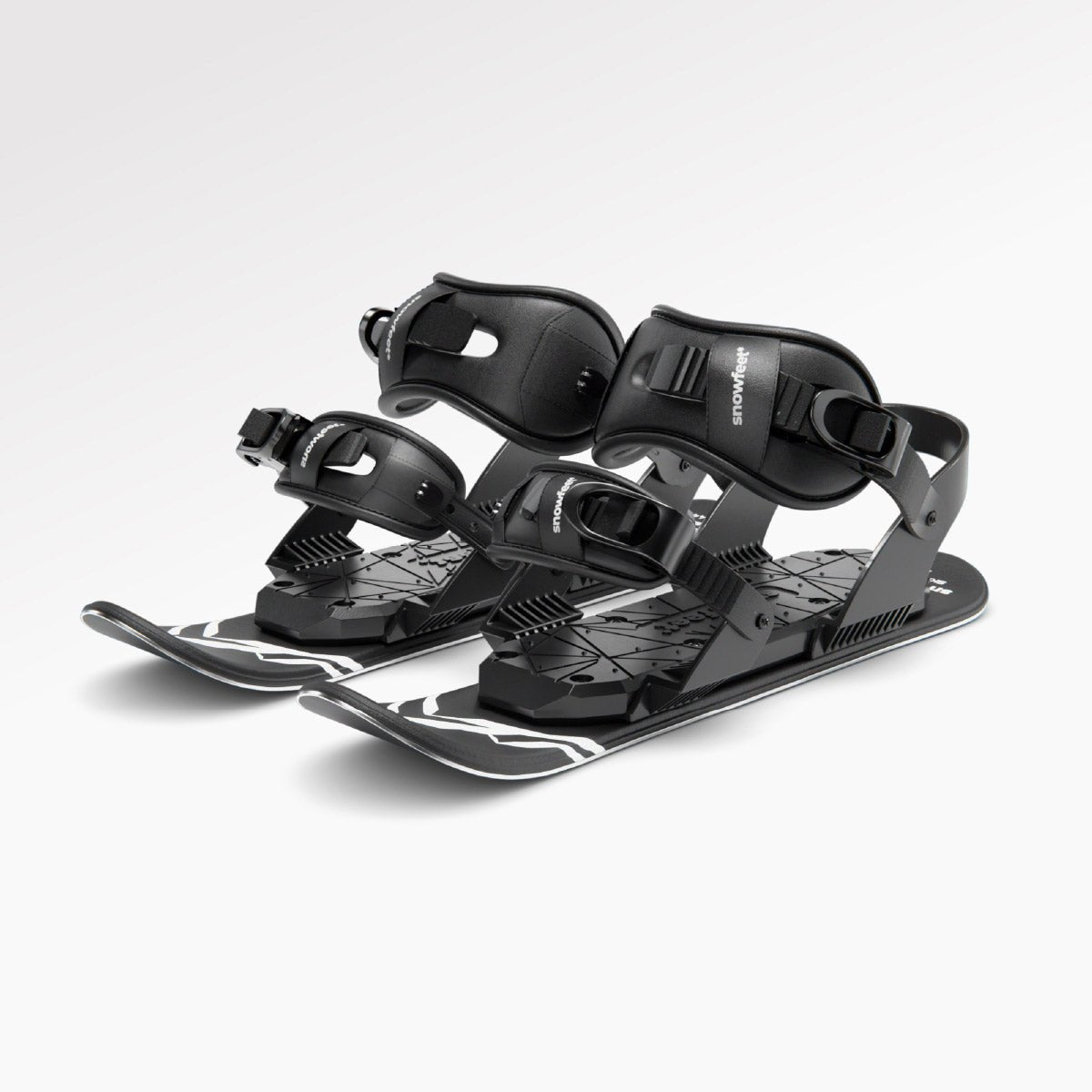
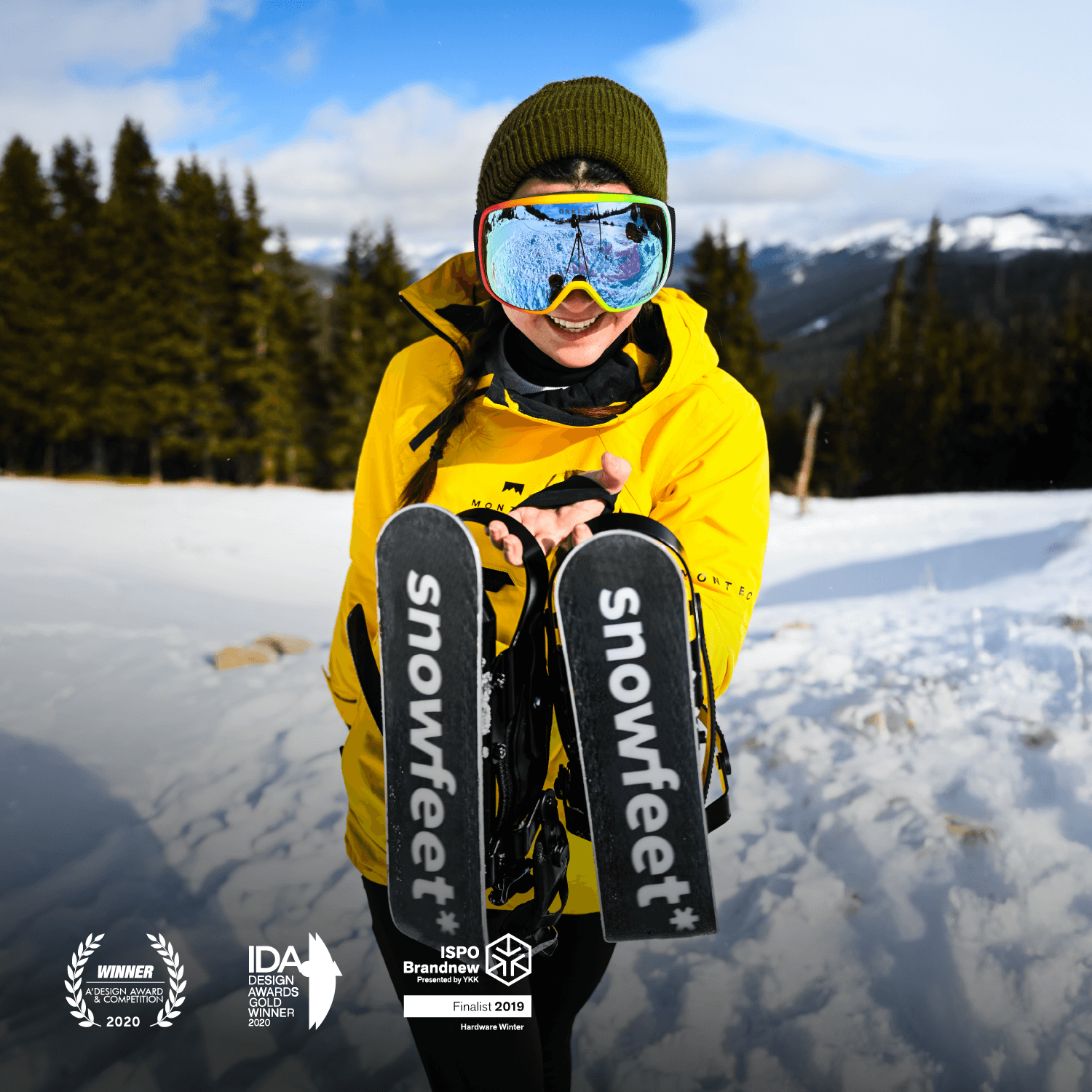
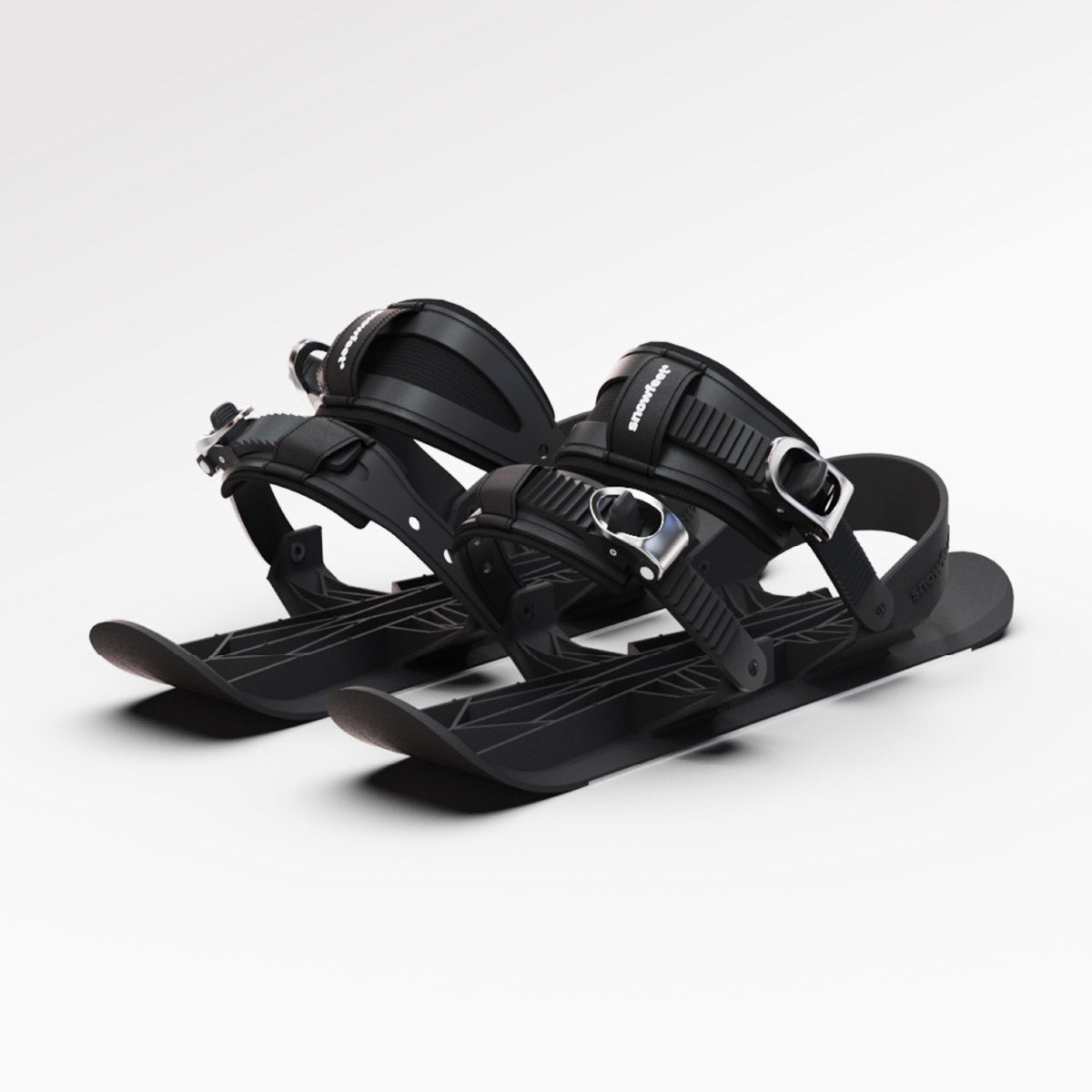

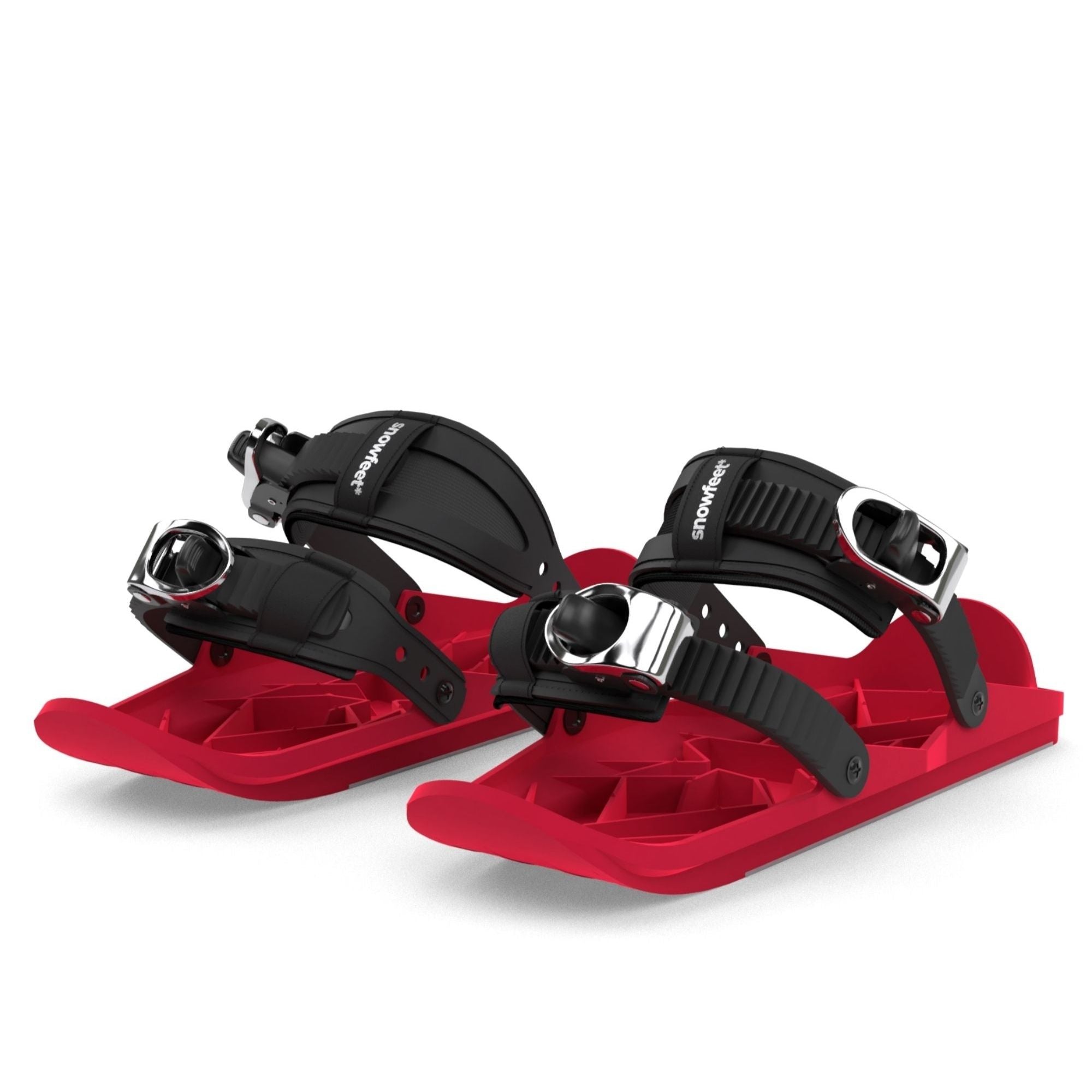
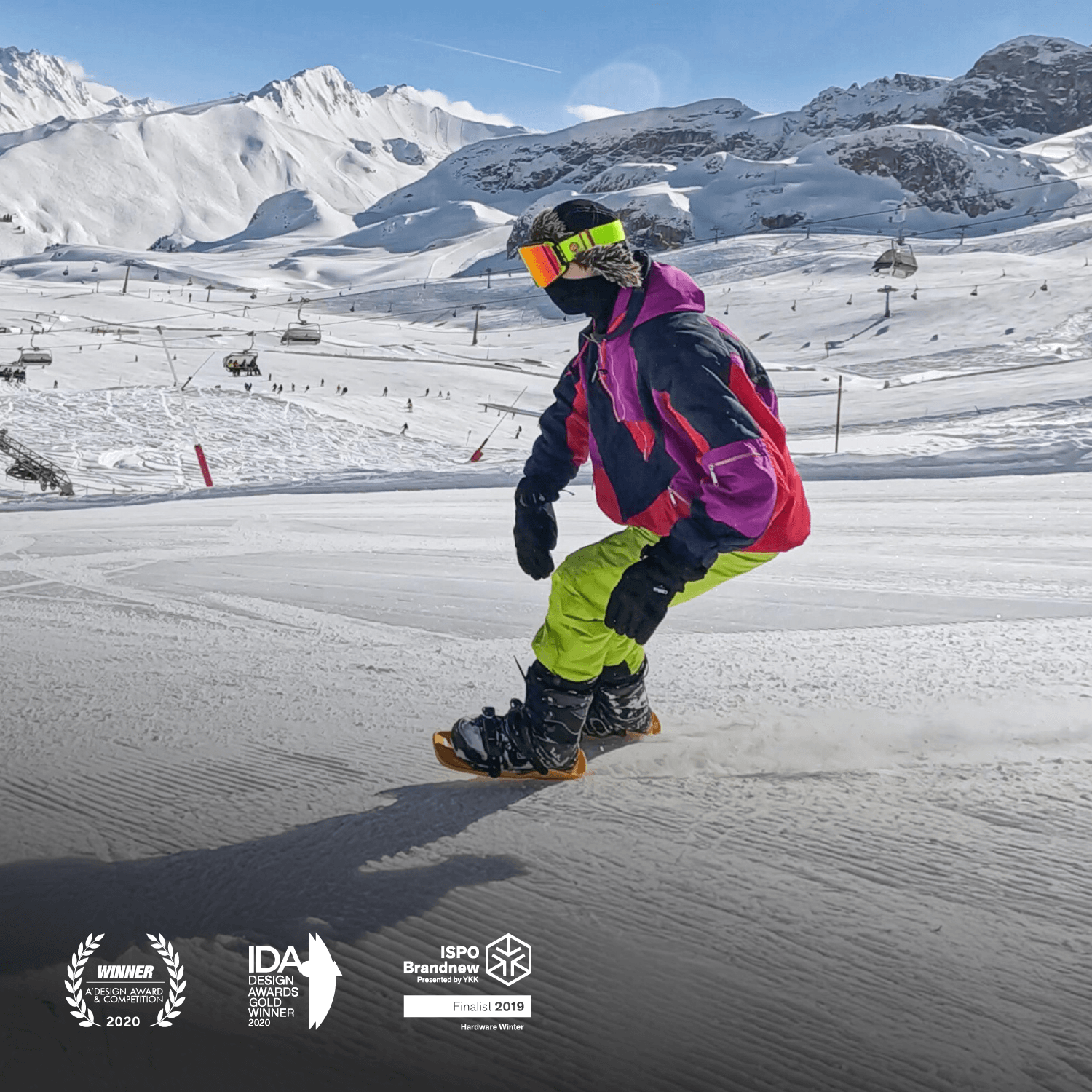


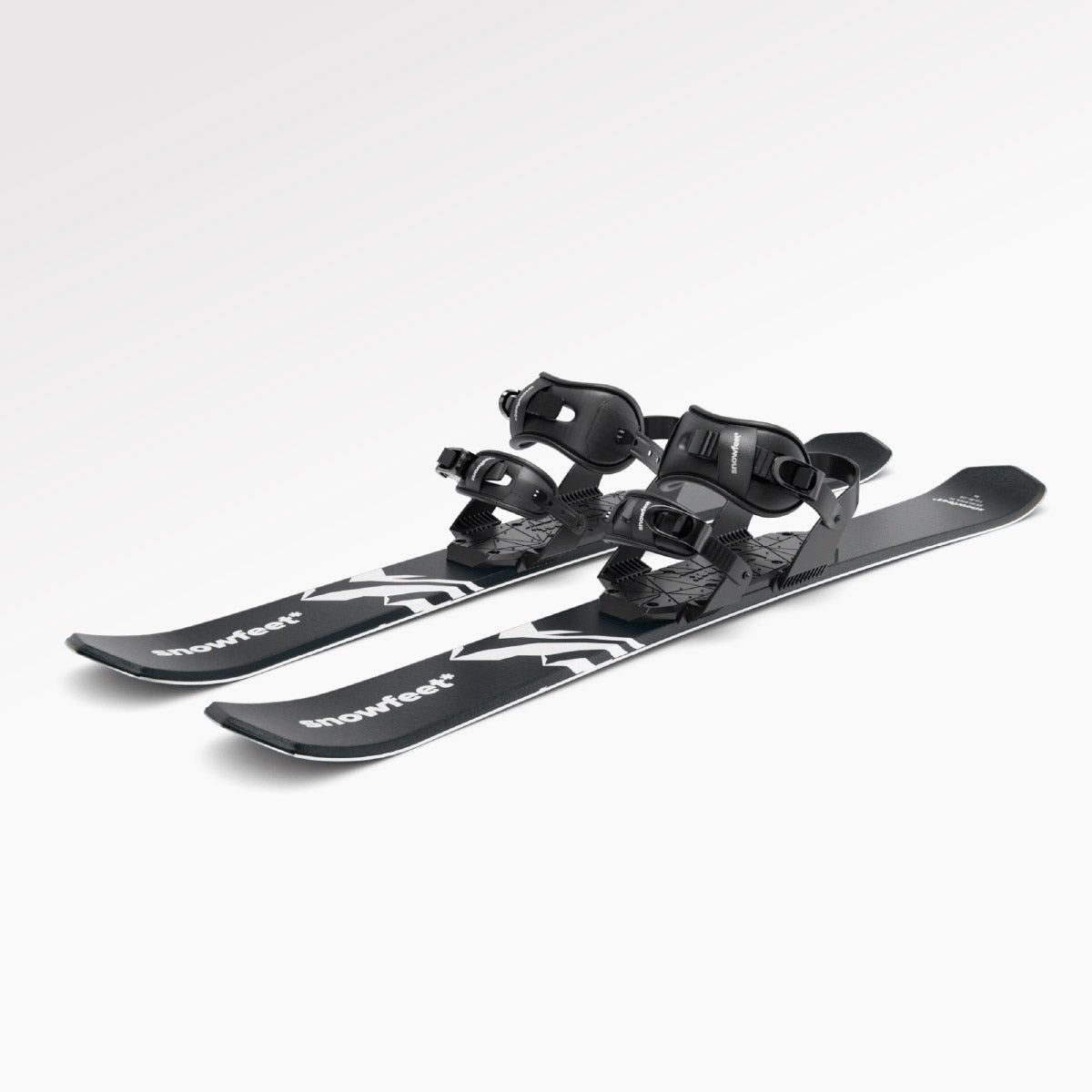
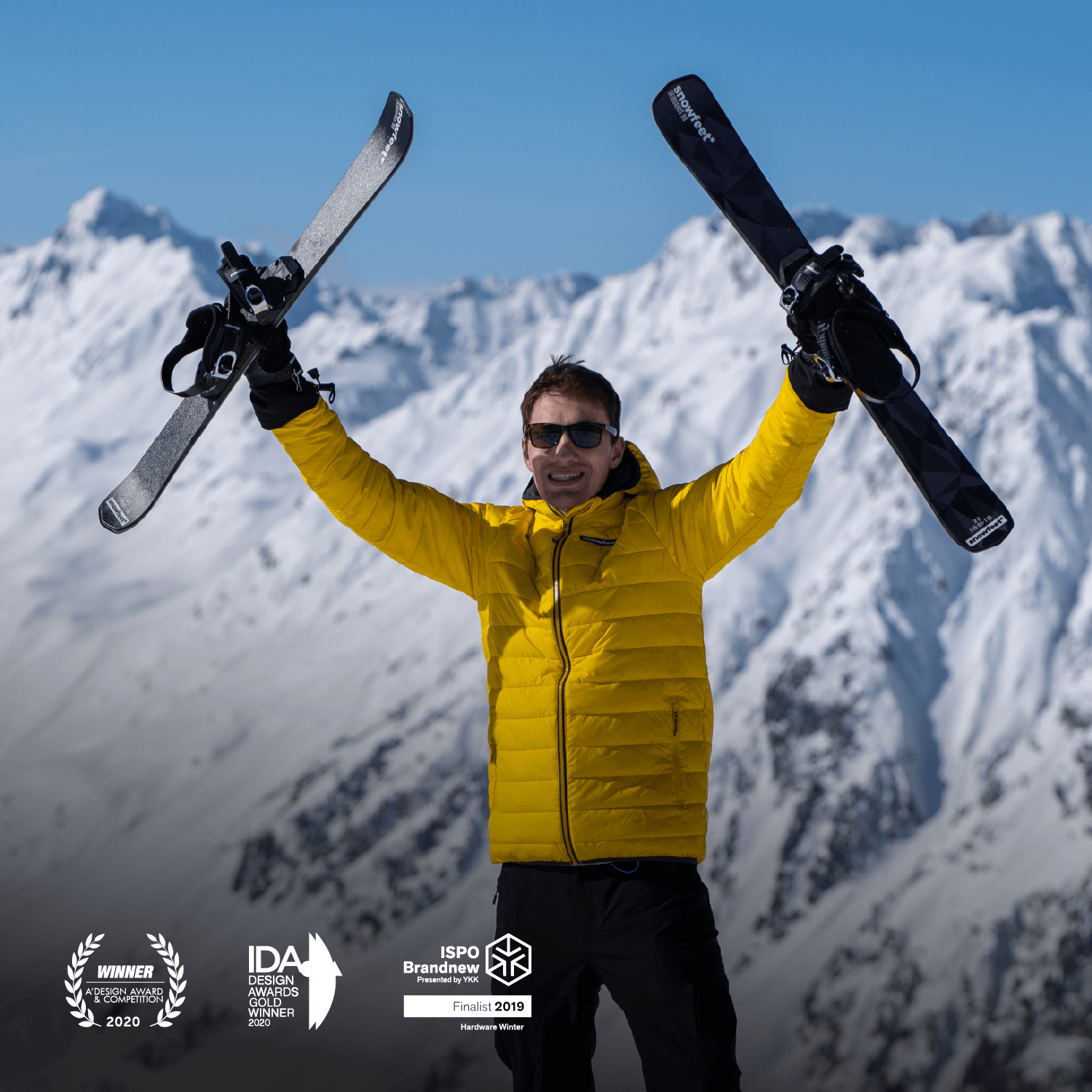
Leave a comment
This site is protected by hCaptcha and the hCaptcha Privacy Policy and Terms of Service apply.